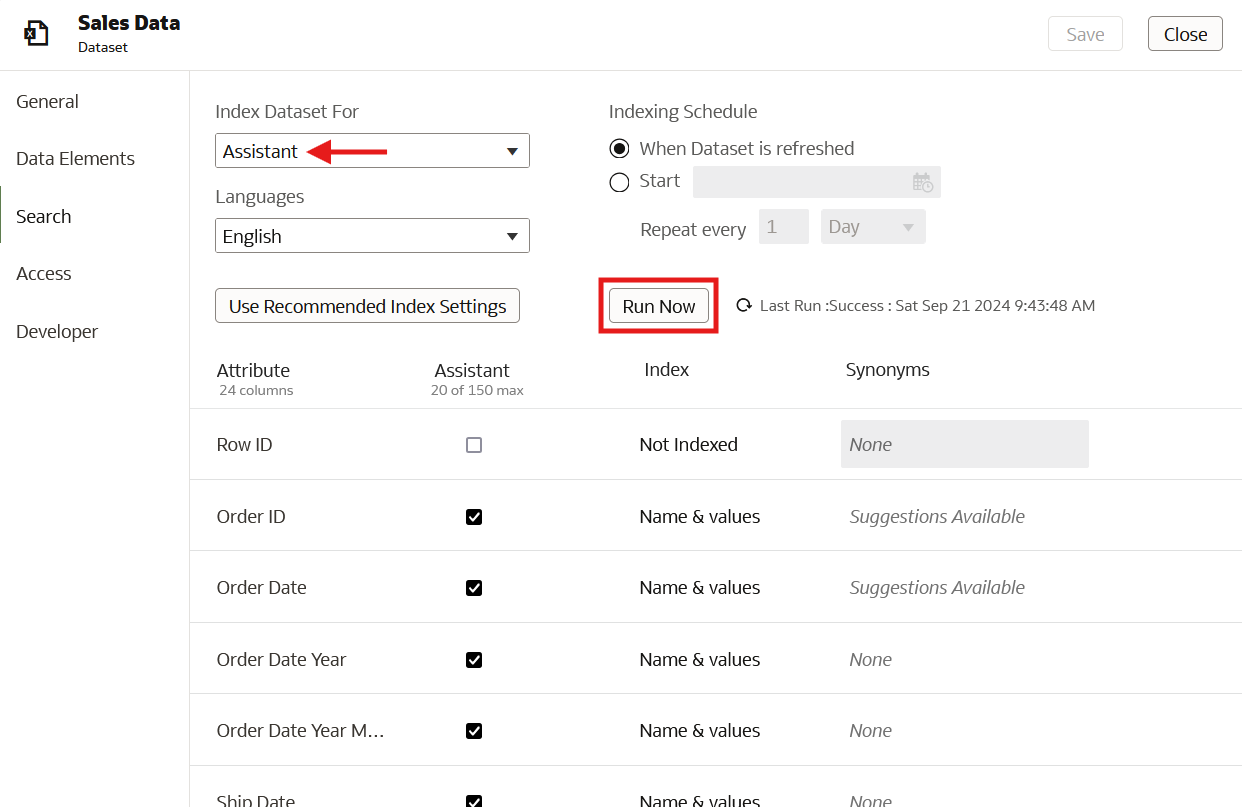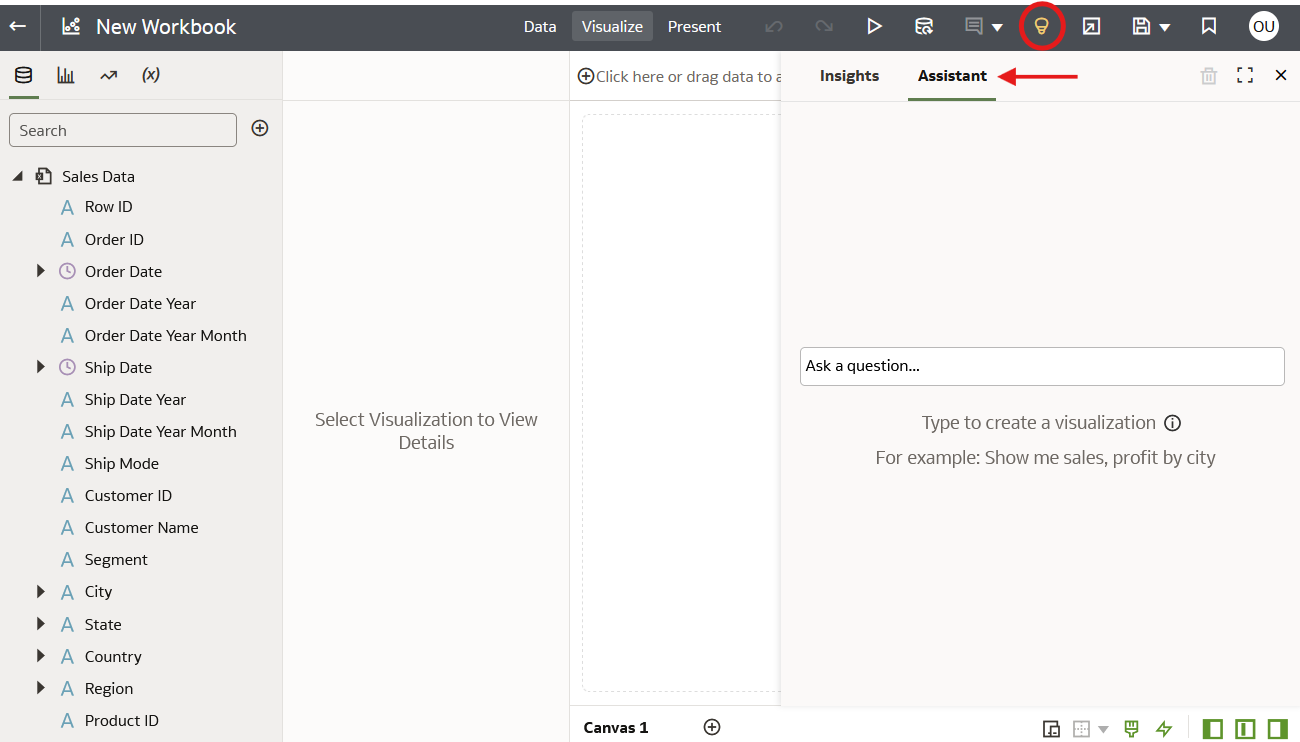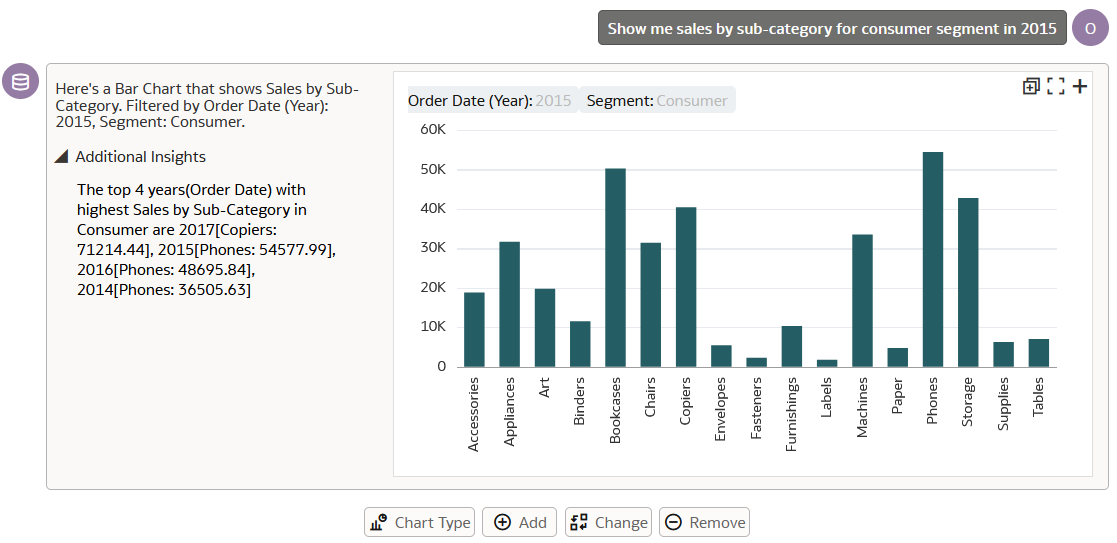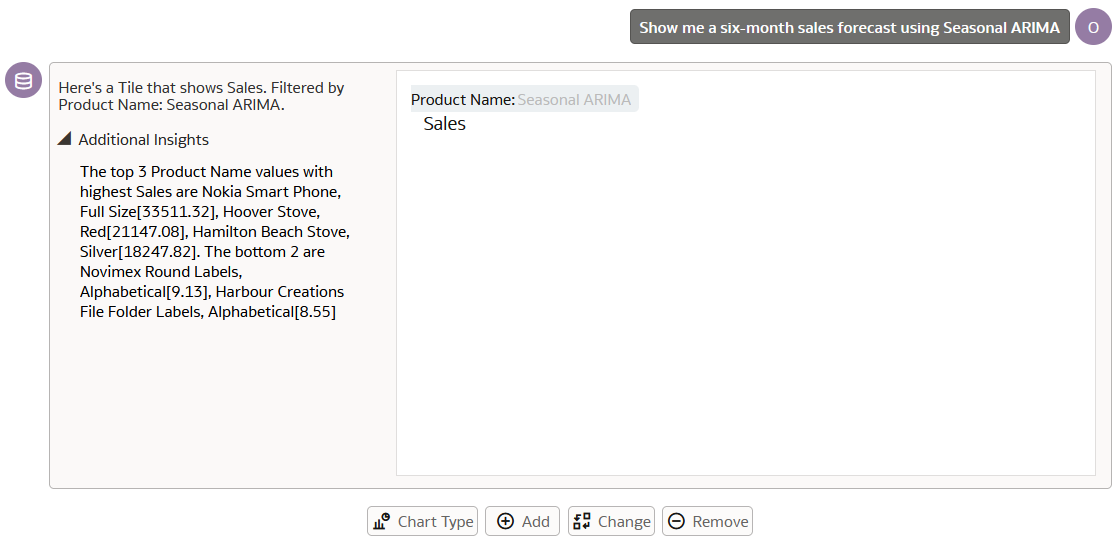Oracle Analytics AI Assistant: Game Changer or Overhyped?
 Federico Venturin
Federico Venturin
Oracle recently announced the general availability of the AI Assistant for Oracle Analytics Cloud (OAC), generating significant interest within the community. The AI Assistant is an AI-powered tool that helps users build and refine visualizations for your workbooks using natural language prompts. In this article, I will dive deep into this new feature to determine whether the excitement is justified or just hype.
Enabling the AI Assistant
The AI Assistant can be enabled on a dataset basis by indexing the dataset. To do this, right-click on a dataset, select the Inspect option, and open the Search tab. From the Index Dataset For dropdown, select the Assistant option, then click on the Run Now button (Figure 1).
 Figure 1. Indexing a dataset for the AI Assistant
Figure 1. Indexing a dataset for the AI Assistant
The indexing process takes a few minutes. To get the best results, exclude columns that aren’t likely to be used in natural language questions, such as IDs and keys, and select the language that matches your data. Support for subject areas is expected to come soon. In the meantime, you can create a dataset from a local subject area and index it for the Assistant as a workaround.
Using the AI Assistant
To use the AI Assistant, click on the Auto Insights icon in a workbook with a dataset that has previously been indexed, and select the Assistant tab (Figure 2).
 Figure 2. Using the AI Assistant in workbooks
Figure 2. Using the AI Assistant in workbooks
Enter a question in natural language about the dataset in the Ask a question field, such as Show me sales by sub-category for consumer segment in 2015, and the AI Assistant will answer providing visualizations and textual insights (Figure 3).
 Figure 3. The AI Assistant answers a user's question
Figure 3. The AI Assistant answers a user's question
The answer can be added to the canvas with a click, or refined further using the buttons at the bottom of the Assistant panel. These buttons simplify prompt generation to change the visualization type, and to add, change or remove fields, filters, or specific values.
So far, so good. But what happens with more complex prompts, such as Show me a six-month sales forecast using Seasonal ARIMA on the line chart? The AI Assistant may not understand the question and will either prompt the user to reformulate it and try again (Figure 4), or generate an unexpected result (Figure 5).
 Figure 4. The AI Assistant didn't understand the question and prompted the user to reformulate it
Figure 4. The AI Assistant didn't understand the question and prompted the user to reformulate it
 Figure 5. The AI Assistant didn't understand the question and generated an unexpected result
Figure 5. The AI Assistant didn't understand the question and generated an unexpected result
Unfortunately, this is not an isolated case, as it occurs in the following circumstances/use cases when the user wants the AI Assistant to:
Apply advanced analytics functions
Understand synonyms that have not been mapped to the existing columns when the dataset was indexed (e.g. Show me income by country)
Use existing workbook calculations, or generate them on the fly (e.g. Show me sales minus profit)
Use knowledge enrichments available in the workbook editor (e.g. Show me sales by continent)
Consider existing data blending relationships (e.g. Show me sales, target by country, where Sales and Target are in different datasets, but blended in the workbook)
Apply style formatting and/or conditional formatting (e.g. Show me sales by country in yellow)
I also noticed that the textual content in the Additional Insights section can’t be easily added to the workbook (copy and paste does not work). Therefore, when it contains useful information, the user must manually write it down in a Text Box (or add a Note) to share it across the organization. What a shame!
Conclusion
The Oracle Analytics AI Assistant has huge potential and can truly revolutionize the landscape of the BI and Analytics world in the near future. However, at the moment, it’s not yet a game changer.
The AI Assistant is very similar to the BI Ask feature, which creates visualizations based on the keywords entered in the homepage search bar - something designed for novices to quickly explore data without needing to understand how Data Visualization works.
Unlike BI Ask, the AI Assistant requires a large OAC instance with 10+ OCPUs to work, which can be prohibitively expensive for many organizations. Oracle’s goal is to progressively lower the OCPU requirement over the next several months and get everyone onboard, but for now, proper training would be significantly less expensive and provide more benefits.
Moreover, as an expert user, I find it easier to use the editor rather than rely on the AI Assistant. Creating visualizations in Data Visualization is straightforward, and I would like the AI Assistant to help with more time-consuming tasks, such as applying consistent formatting, understanding synonyms without prior mapping, and generating complex calculations on the fly.
Subscribe to my newsletter
Read articles from Federico Venturin directly inside your inbox. Subscribe to the newsletter, and don't miss out.
Written by

Federico Venturin
Federico Venturin
Federico Venturin is an Oracle ACE Associate and a seasoned Oracle Analytics enthusiast with over 14 years of experience. He has been speaking at major Oracle conferences (OUG Ireland, UKOUG, RMOUG, ODTUG Kscope), sharing insights and best practices. He maintains a technical blog with regular articles about Oracle Analytics, and actively contributes to Oracle community forums, providing solutions and guidance. Outside of work, Federico likes to play videogames, travel all around the world and taste local food.